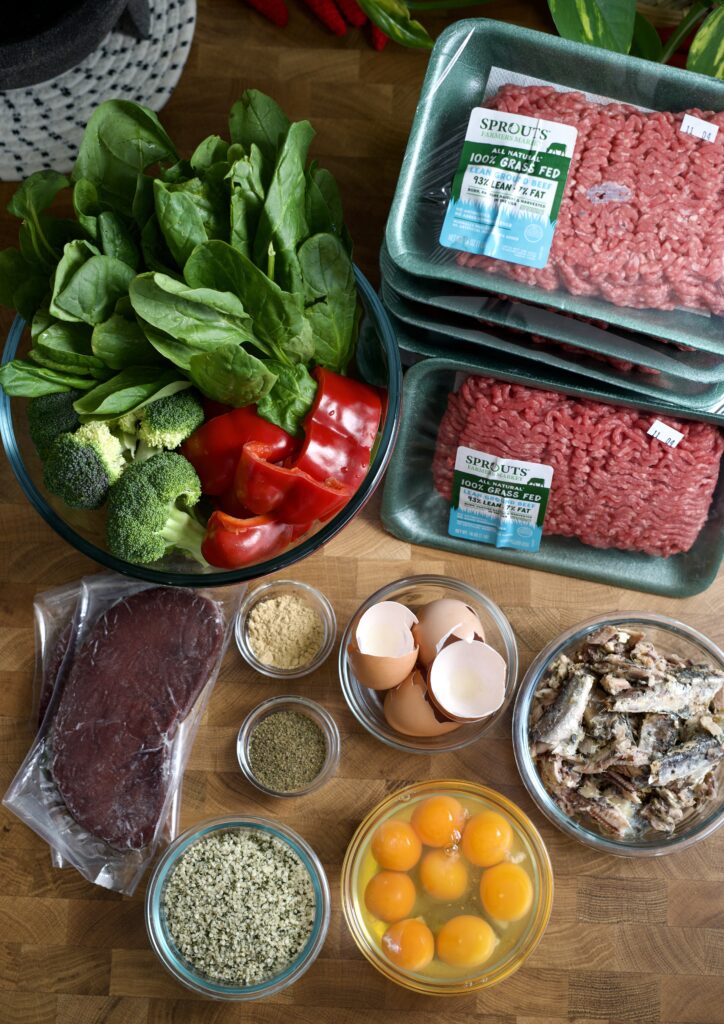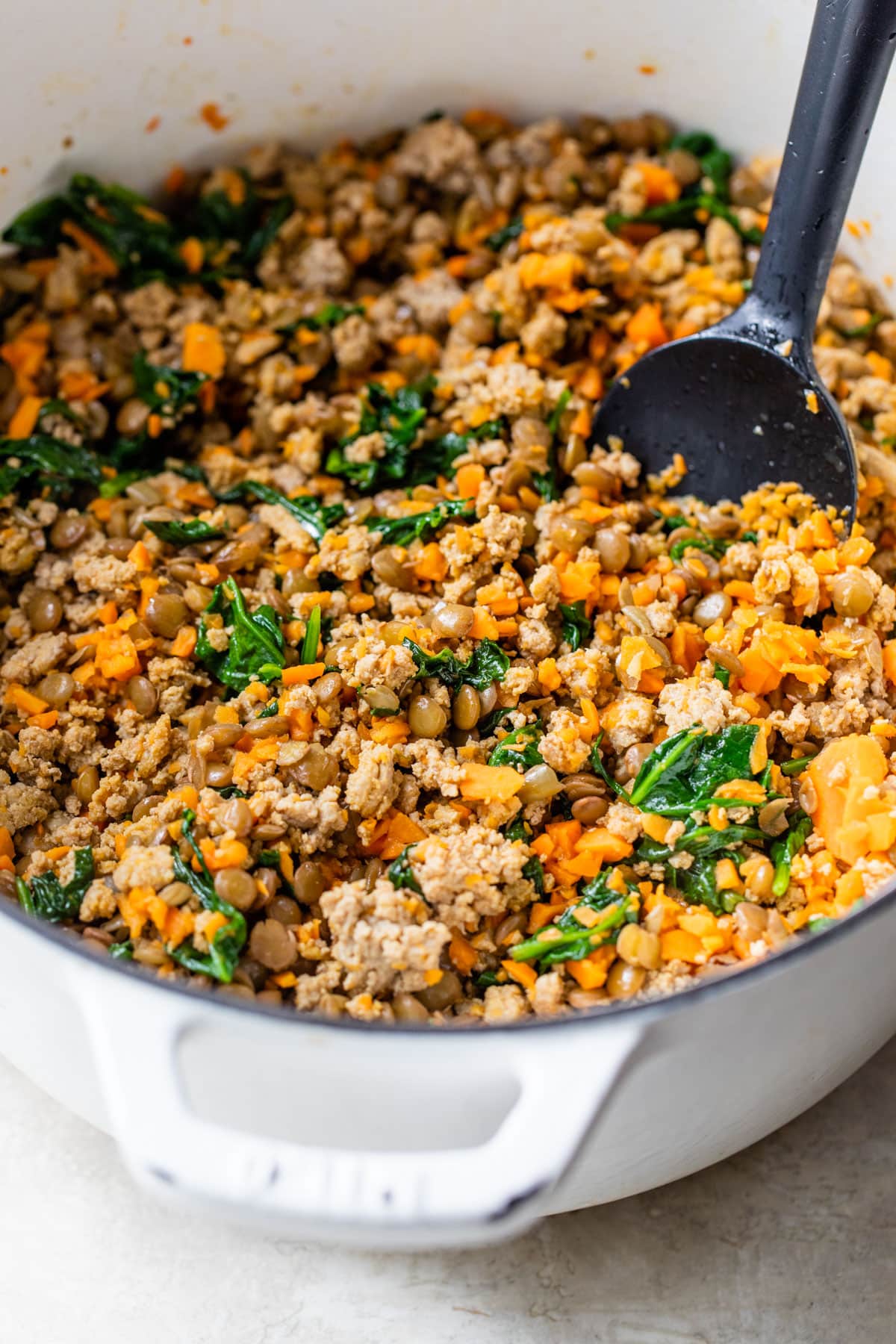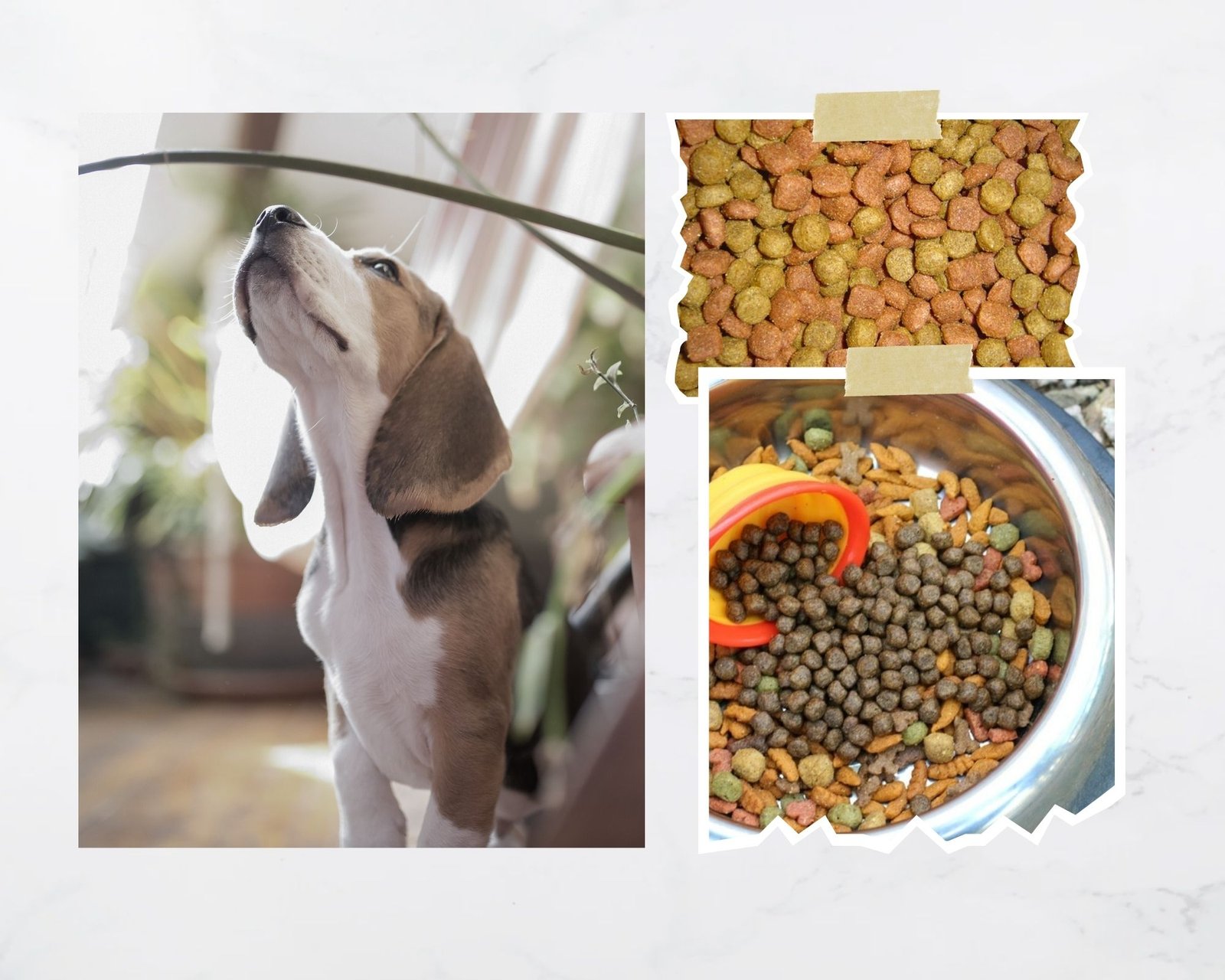Find out how to Make Fresh Dog Food. To make fresh dog food, select lean protein, vegetables, and grains, cook thoroughly, and store appropriately. This ensures quality nutrition for your furry friend.
By following simple steps and using fresh ingredients, you can provide a wholesome diet for your dog that promotes health and vitality. Homemade dog food allows you to control what goes into your pet’s food, avoiding preservatives and unnecessary additives commonly found in commercial dog food.
With a little effort and planning, you can create fresh, nutritious meals that your dog will love. Taking the time to make fresh dog food shows your dedication to your pet’s well-being and can lead to a happier, healthier pup.
How to Make Fresh Dog Food Read the full post for more details.
Benefits Of Fresh Dog Food
Fresh dog food offers several benefits that enhance your furry friend’s health and well-being. With carefully selected, high-quality ingredients, fresh dog food can provide essential nutrients, improve digestion, and offer a range of other advantages. Understanding the benefits of fresh dog food can help you make informed decisions about your pet’s nutrition.
Nutritional Value
Fresh dog food contains essential nutrients such as protein, fiber, vitamins, and minerals. These nutrients are often lost during the processing of commercial dog food, but with fresh food, they are preserved in their natural state. This ensures your dog receives a nutrient-rich diet for optimal health and vitality.
Improved Digestion
Fresh dog food is free from artificial additives and preservatives that can contribute to digestive issues in some dogs. The natural, wholesome ingredients in fresh food are easily digestible, reducing the risk of gastrointestinal discomfort and promoting better digestion. This can lead to fewer digestive problems and a happier, healthier pup.
How to Make Fresh Dog Food Click here for more details on this topic: Click here

Credit: thismessisours.com
Choosing The Right Ingredients
When making fresh dog food, choosing the right ingredients is crucial for your furry friend’s health and well-being. By incorporating nutrient-rich proteins, fruits and vegetables, and healthy fats, you can provide a well-balanced diet that supports your dog’s overall health.
Proteins
Proteins are essential for your dog’s muscle development and overall growth. Lean proteins such as chicken, turkey, and fish are excellent choices for a dog’s diet. Ensure proteins are cooked thoroughly to avoid any potential contamination risks.
Fruits And Vegetables
Incorporating a variety of colorful fruits and vegetables can provide your dog with essential vitamins, minerals, and fiber. Blueberries, carrots, and spinach are excellent options. Remember to wash and cut fruits and vegetables properly before serving.
Healthy Fats
Healthy fats are vital for your dog’s skin and coat health. Coconut oil, salmon oil, and flaxseed oil can be beneficial sources of healthy fats. Avoid feeding your dog foods high in trans fats or saturated fats.
How to Make Fresh Dog Food Also click here for more details about dog food: click here
Preparation Steps
Proper preparation is key to making fresh dog food, ensuring your furry friend receives a balanced and nutritious meal. This section will cover important steps to follow when preparing homemade dog food.
Meal Planning
Meal planning is the first crucial step in creating fresh dog food. Dogs require a balanced diet to support their health and well-being like humans. Planning its meals is essential to ensure your dog receives various nutrients.
Here are some meal-planning tips:
- Create a menu: Design a weekly or monthly menu for your dog’s meals, including protein sources, fruits, vegetables, and carbohydrates. This helps ensure a balanced and diverse diet.
- Consider your dog’s nutritional needs: Talk to your veterinarian to determine your dog’s specific dietary requirements based on their age, size, breed, and any health conditions they may have.
- Diversify protein sources: Rotate between different protein sources, such as chicken, beef, fish, and eggs, to provide a range of essential amino acids.
- Include fruits and vegetables: Incorporate a variety of fruits and vegetables into your dog’s meals to provide vitamins, minerals, and antioxidants.
- Add carbohydrates: Include healthy carbohydrates like brown rice, sweet potatoes, or quinoa to provide energy and fiber.
Balancing Nutrients
It’s crucial to ensure proper nutrient balance when preparing fresh dog food. Dogs require a specific ratio of proteins, carbohydrates, fats, vitamins, and minerals to maintain optimal health. Here are some tips to help you achieve nutrient balance in your dog’s meals:
- Consult a veterinarian: Seek advice from a veterinarian or a canine nutritionist to understand your dog’s nutrient requirements.
- Protein portion: Ensure that approximately 50% of your dog’s meal consists of high-quality protein sources, such as lean meats or fish.
- Carbohydrate portion: Allocate 25% of the meal to healthy carbohydrates, such as whole grains or starchy vegetables.
- Fruit and vegetable portion: Dedicate another 25% of the meal to various fruits and vegetables, ensuring they are dog-friendly and safe.
- Healthy fats: Incorporate fats like olive or fish oil in moderation to provide essential fatty acids.
- Vitamins and minerals: If necessary, consider adding supplements or natural sources like organic meats to provide essential vitamins and minerals.
Cooking Methods
Your chosen cooking method can impact your dog’s food’s nutrient availability and taste. Here are some cooking methods to consider for preparing fresh dog food:
- Boiling is a simple and effective method for retaining nutrients. It is suitable for cooking poultry, meat, or vegetables.
- Baking: Baking can enhance food flavor and is often used to prepare dog treats. However, it is essential to avoid using excessive oil or salt.
- Steaming: Steaming is another healthy cooking option that helps retain nutrients while cooking vegetables or meat.
- Raw feeding: Some owners feed their dogs a raw diet consisting of raw meat, vegetables, and bones. This method requires additional caution to prevent foodborne illnesses.
Storage And Serving
Proper storage and serving fresh dog food are crucial to maintaining quality and ensuring your furry friend gets the best nutrition. Following these guidelines can keep the food fresh and safe for your dog. Let’s look at the critical aspects of storage and serving.
Proper Storage
Storing fresh dog food correctly is essential to prevent spoilage and maintain its nutritional value. Observe these guidelines to guarantee proper storage:
- Once the food is prepared, allow it to cool to room temperature before storing it.
- Divide the food into meal-size portions to make it easier to serve and reduce the risk of contamination.
- Store these portions in airtight containers or storage bags designed for food preservation. This helps maintain freshness and prevents the food from absorbing odors from the surroundings.
- To maintain freshness, mark the preparation date on each container.
- After it has cooled, promptly refrigerate the food. The optimal storage temperature is below 40°F (4°C).
- Use freezer-safe containers or bags to freeze the food for long-term storage.
- Avoid overstocking your fridge or freezer, as this can compromise the food’s freshness and lead to improper storage conditions.
- Regularly clean and sanitize the storage containers to prevent bacterial growth and maintain hygiene.
Serving Portions
Feeding your dog appropriate portions is essential for their health and well-being. Here are some guidelines to help you determine the correct serving size:
- Refer to your dog’s breed, size, age, and activity level to understand their nutritional requirements.
- Consult with your veterinarian to determine your dog’s appropriate daily serving size based on their needs.
- Measure the portions accurately using a kitchen scale or measuring cup.
- Start with the recommended serving size and adjust it as necessary to maintain a healthy weight for your dog.
- Divide the daily portion into multiple meals rather than feeding your dog one large serving.
- Observe your dog’s body condition and energy levels to ensure adequate serving size.
- Do not leave uneaten food out for an extended period. Discard any leftovers after 24-48 hours to prevent spoilage and bacterial growth.
- Always provide fresh and clean water alongside the meals to keep your dog hydrated.
Transitioning To Fresh Food
Transitioning to fresh food from processed dog food can be a game-changer for your furry friend’s health and well-being. A gradual transition ensures a smooth switch, allowing your dog’s digestive system to adapt to the new diet. Monitoring their health during this transition is essential to ensure they thrive on their new fresh food diet. With these considerations in mind, let’s explore the critical steps to make the transition successful.
Gradual Transition
Moving from processed dog food to fresh food should be done gradually throughout one to two weeks. This allows your dog’s digestive system to adjust to the new food and minimizes digestive upsets. Start by replacing a small portion of their processed food with fresh food and gradually increasing the proportion daily. Monitor your dog’s reaction during this period of adjustment.
Avoid making sudden changes as it can lead to stomach upset, diarrhea, or refusal to eat. Remember, every dog is different, so monitor their comfort level and adjust the transition speed accordingly. Be patient throughout this process, as it may take time for your dog to adapt to the new diet fully.
Monitoring Health
Monitoring your dog’s health during the transition is vital. Pay close attention to changes in their behavior, appetite, or stool. If you notice any unusual symptoms, consult your veterinarian for guidance.
Weight loss or gain is expected during this transition period. Regularly check your dog’s weight and physical condition. If you notice any significant changes, it may be necessary to adjust the feeding portion accordingly. A balanced diet tailored to your dog’s nutritional needs is essential for their well-being.
In addition to weight, keep an eye on your dog’s coat condition, overall energy levels, and digestion. A healthy, shiny coat, increased energy, and well-formed stools are indicators that your dog is thriving on their fresh food diet. However, a veterinary consultation is always recommended if you notice recurring issues or concerns.
Following a gradual transition process and closely monitoring your dog’s health can ensure a successful shift to a fresh diet. Remember, every dog is unique, so be patient and give them time to adjust. The benefits of a fresh diet, such as improved vitality and digestion, make the transition worthwhile. So, prepare to embark on this new journey of providing the best nutrition for your furry companion!

Credit: stellanspice.com
Consulting With A Vet
Consulting with a vet is essential in creating a balanced and nutritious fresh food diet for your dog. Before making any significant changes to your pet’s diet, seeking professional input to ensure that the new food plan aligns with your dog’s nutritional needs and health requirements is crucial.
Health Assessment
A veterinary health assessment is the initial step in determining the best diet plan for your furry friend. During this evaluation, your vet will consider your dog’s age, weight, breed, activity level, and any existing medical conditions. This comprehensive assessment allows the vet to identify any specific dietary needs or restrictions that must be integrated into your dog’s fresh food plan.
Professional Input
Once the health assessment is complete, your vet will provide professional input on the nutritional requirements specific to your dog’s individual needs. This includes guidance on the essential nutrients, portion sizes, and dietary adjustments necessary to support your dog’s overall health and well-being. Furthermore, your vet can recommend suitable ingredients and supplements to ensure your dog receives a well-balanced diet tailored to their specific health conditions.
Common Mistakes To Avoid
When preparing fresh dog food, it’s crucial to avoid certain common mistakes that can impact your furry friend’s health. Knowing these potential pitfalls, you can ensure your dog’s diet is balanced and nutritious. The following are some crucial errors to avoid:
Imbalanced Ingredients
Using imbalanced ingredients in your dog’s food can lead to nutrient deficiencies and health issues. To provide a complete nutritional profile, it’s essential to include a variety of protein sources, vegetables, and grains. Be sure to consult a veterinarian or a qualified animal nutritionist to determine the appropriate ingredients for your dog’s specific needs.
Overfeeding
Overfeeding can contribute to obesity and other health problems in dogs. It’s crucial to measure portions accurately and monitor your dog’s weight to ensure they are maintaining a healthy body condition. Avoiding excessive treats and table scraps is also essential in preventing overfeeding and maintaining a balanced diet.
Conclusion And Health Benefits
Introductory paragraph about ‘Conclusion and Health Benefits’
Making fresh dog food at home ensures the quality of ingredients and brings many health benefits for your furry companion. By incorporating wholesome ingredients in their diet, you can enhance your dog’s overall well-being and strengthen the bond you share. Let’s delve into the long-term health impact and owner-dog bonding that stem from preparing fresh meals for your pet.
Long-term Health Impact
Feeding fresh dog food contributes to your pet’s longevity and vitality.
High-quality ingredients promote a robust immune system and prevent health issues.
Owner-dog Bonding
Preparing meals for your dog fosters a deeper connection and trust between you both.
Sharing homemade food strengthens the emotional bond and mutual understanding.

Credit: thealmondeater.com
How to Make Fresh Dog Food To learn more details about the following questions, carefully go through them.
Frequently Asked Questions
How to Make Fresh Dog Food?
To make fresh dog food, select lean protein, vegetables, and grains, cook thoroughly, and store appropriately. This ensures quality nutrition for your furry friend.
How to Make Fresh Dog Food?
To make fresh dog food, select lean protein, vegetables, and grains, cook thoroughly, and store appropriately. This ensures quality nutrition for your furry friend.
Which Ingredients Make the Best Homemade Dog Food?
Opt for lean protein like chicken or turkey, whole grains, vegetables, and fruits in homemade dog food.
Is It Less Expensive To Purchase Or Make Fresh Dog Food?
Making fresh dog food at home can be cheaper, especially if you buy ingredients in bulk. Plus, it allows you to ensure the quality and freshness of your dog’s food. However, preparation and meal planning requires time and effort.
What Constitutes Dog Food’s Top 3 Ingredients?
The top 3 ingredients in dog food should be high-quality protein, healthy fats, and essential vitamins and minerals for a balanced diet. These ingredients support your dog’s overall health and well-being.
Is Homemade Food For Dogs Better?
Homemade food for dogs can be better as it allows control over ingredients and ensures freshness. However, proper nutrition knowledge and balanced recipes are required to meet a dog’s dietary needs. Consult a veterinarian for guidance to provide a well-rounded diet for your furry friend.
How to Make Fresh Dog Food Why do you need to know about it? click on
Conclusion
In a nutshell, feeding your dog fresh food is key to its overall health. Make the switch gradually and consult with a vet for a balanced diet. Your furry friend will thank you with a wagging tail and improved well-being.
Start cooking for your pup today!

Hello I am Farhana I have been doing research on dogs since last 10 years. I have been doing research on dog special parts or dog food since last 10 years. I have gained knowledge about my dog in these ten years so. I want to blog about it daily.

